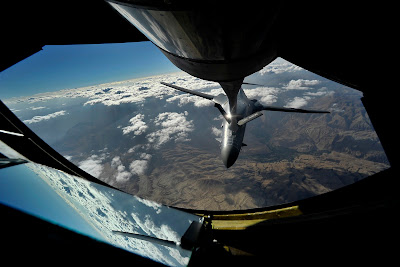 |
| Photo: Solar Panels. Credit: U.S. Navy. |
Waste not.Written on December 9, 2012 by jtozer
Hatch Stage Field Goes Net Zero Energy
It is a common adage that many people have heard throughout life, but
Fort Rucker is taking the saying to heart as it implements its first Net Zero energy facility, slated for completion by the end of December.
Hatch Stage Field is in the process of installing a 51-kilowatt Photovoltaic array, which are solar panels that will be used to collect energy from the sun to convert into electricity, according to Candy Vaughan, Directorate of Public Works branch chief of utilities and energy management.
"The idea is for the field to be Net Zero, which means for us to generate more electricity than we use over the course of the year," she said. "That will be the first place on Fort Rucker to go to Net Zero."
The ultimate goal is complete Net Zero, according to Trevor Marshall, DPW energy engineer, which is in three components: Net Zero energy, Net Zero water and Net Zero waste.
"Net Zero energy is producing as much energy as is consumed, which we’re going to do at Hatch," he said. "Net Zero water is turning water from aquifers, rainwater and things like that into useable water for irrigation purposes; and Net Zero waste is making sure that we don’t put any waste into landfills by recycling or reusing what we can and turning any waste we can into energy."
Vaughan said that the solar array is directly connected to Alabama Power’s electrical grid, so any energy that is generated at the facility that isn’t used can be fed back onto the grid.
"We will still have a monthly fee [with the power company], but what we will not pay is the avoided cost," she said. "As we put electricity back on their grid, they will credit us the amount that the [power company] doesn’t have to spend to create that electricity."
The amount of electricity being fed back onto the grid should offset the electrical cost and more, according to Marshall.
"The solar panels create the electricity in direct current and then an inverter will convert that electricity in alternate current," he explained. "The electricity will then go to Alabama Power’s transformer and step it up to their distribution voltage, and from there it can go anywhere on their distribution system. They will look at how much were sending out versus how much we’re receiving and be able to credit our bill accordingly."
The solar array will generate about 73,000 kilowatt-hours per year, while Hatch Stage Field uses about 20,000 kWh per year, according to Vaughan.
The new system will save Fort Rucker thousands of dollars a year in energy costs in an area that has a high rate of energy consumption, according to Marshall.
"It was decided that Hatch Stage Field [receive the solar array] because there is a higher rate there," said Vaughan. "Solar arrays are high-cost projects, so it just made a lot more sense to use it where the rates are higher, and Hatch has its own electrical account and the rate was significantly higher than the main post."
She added that the installation of the solar array at Hatch could be a preview of what’s to come at other facilities on post.
"We would like to do it in areas that makes sense like the stage fields where the energy cost is high," said Vaughan. "As the cost of these solar panels are coming down, we’re getting closer to being able to do this in more locations."
Although the cost of solar panels is still high, Vaughan said the project at Hatch cost Fort Rucker nothing.
"We had some equipment at one of the main electric substations that were damaged in 2004," she said. "It was determined that repairs needed to the equipment were not cost effective and Alabama Power, along with other companies, removed the generators and credited Fort Rucker with the equipment to apply to this project.
By Nathan Pfau, Army Flier Staff Writer














